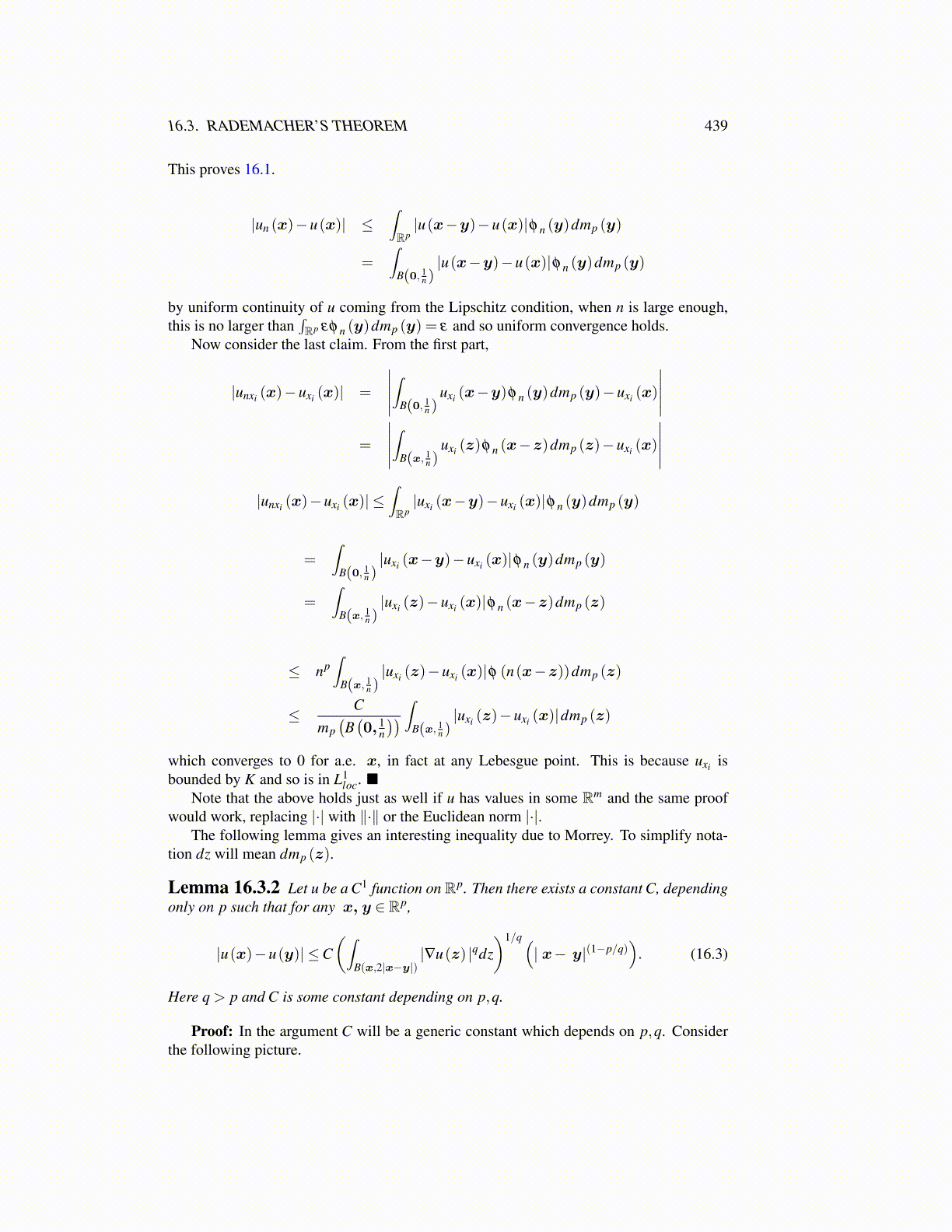
16.3. RADEMACHER’S THEOREM 439
This proves 16.1.
|un (x)−u(x)| ≤∫Rp|u(x−y)−u(x)|φ n (y)dmp (y)
=∫
B(0, 1n )|u(x−y)−u(x)|φ n (y)dmp (y)
by uniform continuity of u coming from the Lipschitz condition, when n is large enough,this is no larger than
∫Rp εφ n (y)dmp (y) = ε and so uniform convergence holds.
Now consider the last claim. From the first part,
|unxi (x)−uxi (x)| =
∣∣∣∣∣∫
B(0, 1n )
uxi (x−y)φ n (y)dmp (y)−uxi (x)
∣∣∣∣∣=
∣∣∣∣∣∫
B(x, 1n )
uxi (z)φ n (x−z)dmp (z)−uxi (x)
∣∣∣∣∣|unxi (x)−uxi (x)| ≤
∫Rp|uxi (x−y)−uxi (x)|φ n (y)dmp (y)
=∫
B(0, 1n )|uxi (x−y)−uxi (x)|φ n (y)dmp (y)
=∫
B(x, 1n )|uxi (z)−uxi (x)|φ n (x−z)dmp (z)
≤ np∫
B(x, 1n )|uxi (z)−uxi (x)|φ (n(x−z))dmp (z)
≤ Cmp(B(0, 1
n
)) ∫B(x, 1
n )|uxi (z)−uxi (x)|dmp (z)
which converges to 0 for a.e. x, in fact at any Lebesgue point. This is because uxi isbounded by K and so is in L1
loc. ■Note that the above holds just as well if u has values in some Rm and the same proof
would work, replacing |·| with ∥·∥ or the Euclidean norm |·|.The following lemma gives an interesting inequality due to Morrey. To simplify nota-
tion dz will mean dmp (z).
Lemma 16.3.2 Let u be a C1 function on Rp. Then there exists a constant C, dependingonly on p such that for any x, y ∈ Rp,
|u(x)−u(y)| ≤C(∫
B(x,2|x−y|)|∇u(z) |qdz
)1/q(| x− y|(1−p/q)
). (16.3)
Here q > p and C is some constant depending on p,q.
Proof: In the argument C will be a generic constant which depends on p,q. Considerthe following picture.